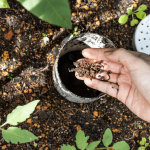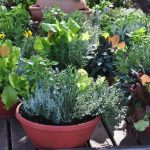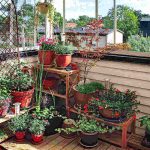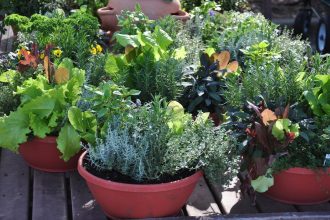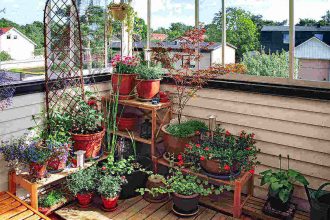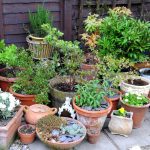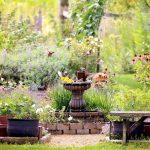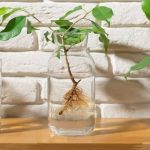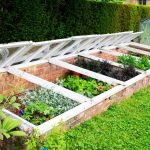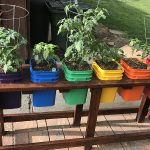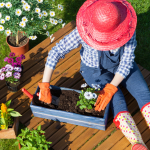In the hustle and bustle of modern life, it’s easy to forget about the quiet green companions that liven up our living spaces – indoor plants. But fear not, learning how to care for indoor plants is simpler than you may think. By mastering the art of watering, understanding the optimal light conditions, and providing the right soil, you can ensure your leafy friends thrive and bloom with vitality. So grab your watering can and let’s delve into the world of indoor plant care together.

Choosing the Right Watering Schedule for Your Indoor Plants
When it comes to caring for your indoor plants, one of the most important factors to consider is the watering schedule. Proper watering is crucial for the health and longevity of your plants, as both overwatering and underwatering can have negative effects.
Factors to Consider When Choosing a Watering Schedule:
- Plant Type: Different types of plants have different watering needs. Research the specific needs of each of your indoor plants to determine how often they should be watered.
- Season: The season can also play a role in determining the watering schedule. Plants may require more frequent watering during hot, dry seasons and less watering during cooler, rainy seasons.
- Pot Size: The size of the pot can impact how quickly the soil dries out. Smaller pots may require more frequent watering, while larger pots may hold moisture for longer periods.
- Soil Type: The type of soil used can also affect the watering schedule. Well-draining soil will require more frequent watering, while soil that retains moisture may only need to be watered occasionally.
| Plant | Watering Frequency |
|---|---|
| Fiddle Leaf Fig | Once a week |
| Succulents | Every 2-3 weeks |
| Spider Plant | Every 1-2 weeks |
Optimizing Natural Light Exposure for Healthy Growth
1. Choose the Right Location
Place your plants near windows that receive bright, indirect sunlight. South-facing windows typically get the most light throughout the day, making them ideal for sun-loving plants. If you have east or west-facing windows, consider rotating your plants periodically to ensure they receive uniform light exposure.
2. Monitor Light Levels
Keep an eye on how much light your plants are getting each day. Too much direct sunlight can scorch leaves, while too little light can cause plants to become leggy and weak. Use a light meter to measure the intensity of light in different areas of your home and adjust plant placement accordingly.
3. Supplement with Grow Lights
If you live in a space with limited natural light, consider using grow lights to supplement your plants’ light needs. LED grow lights are energy-efficient and can provide the right spectrum of light for healthy plant growth. Place grow lights a few inches above your plants for optimal results.
Understanding the Importance of Proper Soil Management
Proper soil management is essential for the health and growth of indoor plants. The right soil provides plants with the nutrients they need to thrive and ensures they have good drainage to prevent waterlogged roots. Here are some key tips to help you understand the importance of proper soil management:
- Choose the right soil: Different plants have different soil requirements. Make sure to select a soil mix that is suitable for the specific needs of your indoor plants.
- Monitor moisture levels: Overwatering can lead to root rot, while underwatering can cause plant stress. Check the moisture level of the soil regularly and adjust your watering schedule accordingly.
- Fertilize appropriately: Soil provides plants with essential nutrients, but they may need additional fertilization to thrive. Use a balanced fertilizer according to the instructions on the packaging.
| Tip: | Use a moisture meter to accurately monitor the moisture level of your plant’s soil. |
By taking the time to understand the importance of proper soil management, you can ensure that your indoor plants have the best possible environment to grow and flourish. Remember that healthy soil equals healthy plants!
Fertilizing Techniques to Enhance Plant Health
When caring for indoor plants, it is essential to pay attention to . By providing the proper nutrients, you can help your plants thrive and grow strong. Here are some tips to help you fertilize your indoor plants effectively:
- Choose the right fertilizer: Select a fertilizer that is specifically designed for indoor plants. Look for a balanced formula that contains essential nutrients such as nitrogen, phosphorus, and potassium.
- Follow the instructions: Be sure to follow the recommended instructions on the fertilizer package. Over-fertilizing can be harmful to your plants, so it’s crucial to use the correct amount.
- Fertilize during the growing season: It’s best to fertilize your plants during their active growth periods, typically in the spring and summer. This will help promote healthy growth and flowering.
| Plant Type | Recommended Fertilizer |
|---|---|
| Succulents | Cactus fertilizer |
| Ferns | General houseplant fertilizer |
| Flowering plants | Balanced liquid fertilizer |
By following these fertilizing techniques, you can enhance the health and vitality of your indoor plants, ensuring they continue to brighten up your home for years to come.
In conclusion, caring for indoor plants requires a delicate balance of watering, light, and soil quality. By understanding the individual needs of your plants and providing them with the right environment, you can ensure they thrive and bring a touch of nature into your home. Remember to check the soil moisture, provide adequate sunlight, and use nutrient-rich soil to keep your plants happy and healthy. With a little bit of attention and care, your indoor garden will flourish and bring joy to your space. So go ahead, grab your watering can and give your plants some love – they’ll thank you for it with vibrant blooms and lush foliage. Happy gardening!


